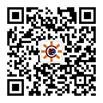Whether it’s dissecting a pig’s heart or growing a bean plant in a paper cup, giving students hands-on experiences often helps them better absorb science lessons. That’s why educators at the Byrd Polar and Climate Research Center do more than just talk about ice cores and what they reveal about temperature, precipitation, and climate: The scientists also help students create their own ice cores—using Pringles potato chip cans filled with layers of frozen water, instant coffee, and other materials to represent the different layers found in the ice.
“If you haven’t seen an ice core and looked at what patterns are there, it’s really hard to just jump to the data and have a deeper meaning of what [they’re] telling you or how [they connect] to the core,” said Jason Cervenec, education and outreach director at the Center, which is on the campus of Ohio State University (OSU) in Columbus.
Every year, Cervenec and his staff host thousands of kindergarten to 12th-grade students to teach them about ice cores and the secrets they hold. A handful of other facilities do similar educational outreach, including the National Science Foundation Ice Core Facility in Denver and the Climate Change Institute at the University of Maine in Orono.
Hands-On Learning
At the Byrd Center, a favorite activity for students is stepping into the ˗34℃ freezer that holds ice cores extracted from glaciers around the globe. Paleontologists Lonnie Thompson and Ellen Mosley-Thompson, who collected many of the cores (now encased in silver canisters), often address the visiting school groups themselves, said Cervenec. The respected researchers are “as happy to do that as they are to talk to someone who is visiting from halfway across the world.”
Cervenec and his staff also make interactive videos that teachers can download from the Center’s website, offer virtual lessons to students anywhere in the world, and travel to local classrooms to share their ice core expertise.
Eric Sztul, a 7th-grade science teacher for the Columbus public schools, said his students love it when Cervenec brings crampons, parkas, and ice axes to show them what researchers wear to collect ice cores. “The kids always have lots of questions,” Sztul said.
Climate Change Evidence
Cervenec said his group tries to make it easy for educators to teach about a variety of complex topics, including climate change. Ice core records allow scientists to reconstruct and compare past climates and their fluctuations, as well as show that Earth’s current warming pattern is an anomaly.
A timeline graph at the Center, for example, connects proxy data found in an ice core with world events so students can see how warming fluctuations have become much more severe since the Industrial Revolution.
“I love learning about climate change throughout geologic time and then looking at that in reference to real time,” said Claire Monk, who teaches environmental science and geography at New Albany High School, 32 kilometers northeast of OSU.
Monk regularly takes her students to the Center, and also has them create ice cores in the classroom. They add a layer of cinnamon to represent deposited volcanic ash, for example, and a layer of seltzer water to illustrate carbon dioxide bubbles trapped in ice.
One of Monk’s former students, Chloe Platte, said the knowledge she gained came in handy. “I convinced my dad that climate change was real,” said Platte, now a sophomore at Clemson University. “He was skeptical, like, ‘We don’t have the data for X many years ago.’ And I was like, ‘Yeah, we do in ice cores.’”

When high school and college students come to the Center, they can also engage in lessons analyzing radioactivity data extracted from ice cores from the Greenland Ice Sheet. The data come from dust that wind carried to glaciers in the 1950s and 1960s when the Soviet and U.S. governments were performing aboveground testing of nuclear bombs. “What [students] do essentially is use that as a reference point to put an age to the ice,” said Stacy Porter, a postdoctoral paleoclimatologist at the Center who teaches that lesson. “Because one of the key points of doing ice core research is that if you don’t have a proper timescale, your data are kind of useless.”
The Byrd Center’s lessons seem to be working; both Sztul and Monk said they have former students who’ve become inspired to study environmental topics in college.
“There’s no question it inspired me,” said Zoe Kellerman, one of Monk’s former students who is studying environmental science and sustainability at Rollins College in Florida. “Learning about the ice cores was such an eye-opening experience.”
—Nancy Averett (@nancyaverett), Science Writer






